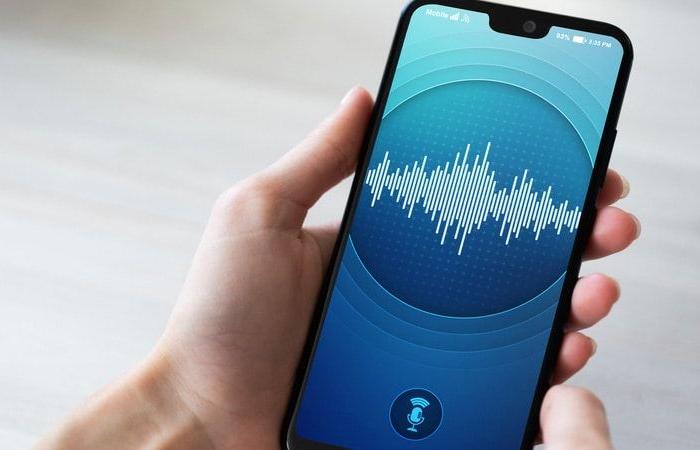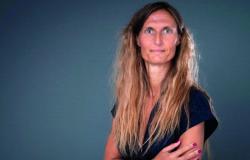Guy Fagherazzi
The international study Colive Voice , presented at the congress of EASD 2024 shows that people with type 2 diabetes (DT2) have different voices from the general population, at the same age and same sex (see the results of the study below in the box). [1] These results open up “prospects for developing a screening tool front line of DT2, non-invasive, fast and achievable from a few seconds of voice recording on a smartphone or in consultations,” explains the principal investigator of the study, Guy Fagherazziresearcher in diabetes epidemiology at Luxembourg Institute of Health who answered questions from Medscape French Edition.
Medscape: How did the idea of screening for diabetes using voice come about?
Guy Fagherazzi: During the Covid-19 pandemic, we started working on analyzing the voice of patients with chronic diseases. We wanted to find solutions to analyze people’s health remotely, without physical contact. And we quickly realized that it was applicable to other diseases. Since my research interest has always been diabetes, I looked at how we could link voice and people living with diabetes. In the literature, there is already some work indicating that people with diabetes have different voices from the general population, so that was the starting point.
What mechanism explains why patients with T2D have a different voice?
It is difficult to isolate a single factor that would explain the fact that the voice is different in people with type 2 diabetes (T2D) compared to those without diabetes. It can be said that there are several factors at play.
Some biological mechanisms involving the vascular system have an influence on the symptoms of people with metabolic diseases such as diabetes (e.g. more frequent cardiorespiratory fatigue). Overweight and obesity are also fundamental factors since patients with these conditions also have vocal parameters that are slightly different from people of normal build. Hypertension, which is also very common in T2D, has an impact.
Neurological complications are “audible” because nerves and muscles can be affected and therefore the production of sound in the body via the vocal cords can be impacted.
Thus, respiratory fatigue, neuropathies, but also for example dehydration or gastric acid reflux (which are more frequent in diabetics), make the voices sound different.
These differences are not necessarily perceptible to the human ear. That is why we do not really realize the link between voice and diabetes. But today, with technological advances in signal processing and artificial intelligence, we are able to extract a lot of information from the voice. And it is all these very subtle little differences that, when put together, make it more or less possible to detect diabetic status.
You explain in your study that the tone of voice is an indicator of diabetes status. What is the situation?
The tone of voice can indeed be impacted. It is quite complex and I would say multidimensional.
In general, people who have had diabetes for 5 to 10 years, or even more than 10 years, have a hoarseer voice than people without diabetes of the same age and gender. In our study, we were able to extract a lot of features from the raw audio signal of the voice, and that’s why it’s complicated to then extract a single factor or parameter of the voice that is very different.
Is there a difference between patients whose diabetes is treated and controlled and those whose disease is not managed?
Glycemic fluctuation, hypo- and hyperglycemia, are conditions that modify the voice in the short term.
The hoarse voice evolves with the duration of diabetes and, in fact, it is the people who have the least well-controlled diabetes who will have this type of change more frequently. But the hypothesis drawn from the results that we presented at this EASD congress is that glycemic fluctuation, hypo- and hyperglycemia, are states that modify the voice in the short term. So there are also lots of small, very rapid changes that can be detected in theory, but we have not yet demonstrated this. We are currently conducting additional studies.
You asked participants to read an excerpt from the Universal Declaration of Human Rights of the UN. Why this choice?
We have a very standardized approach. Participants had to make several recordings, e.g. say “Aaaaaa” for as long as possible on a single breath. And there was actually a reading of a text, which helps to better discriminate between diabetics and non-diabetics. It works a little better than the sounds we usually make and which work well for other diseases. The text is a paragraph from the Declaration of Human Rights in the mother tongue. We chose it deliberately so that the theme would be as neutral as possible, without emotional peaks. There is an official translation in all languages; Colive Voice being an international, multilingual study, we use these different versions of the text.
Your work focuses on patients with type 2 diabetes. Do you plan to expand your research to type 1 diabetes?
We think that people who have type 1 diabetes also have voice changes over time. But we focused on T2D because the goal is to find a way to do large-scale screening. Screening for type 1 diabetes is obviously an important topic today, but it is often screened in childhood and for now our research is conducted in adults.
What about the differences in accuracy between men and women in your study?
In voice studies, it is always observed that women have different vocal signatures than men, for different reasons. Hormonal fluctuations can impact the pitch and tone of voice, so detecting differences between sick and non-sick people can be more or less difficult depending on the diseases in women. There are always small differences, but overall, our results indicate that we arrive at around 70% accuracy in women (compared to 75% in men).
The results presented at EASD were based on a population based in the United States. When will there be French data?
We started with the United States because we could get a large number of participants who had diabetes very quickly. But we are now replicating the results in global and language analyses. French is obviously one of our priorities. In fact, we invite people to participate, it only takes 20 minutes. You could contribute to this innovative research on non-invasive diabetes detection (go to www.colivevoice.org).
The Colive Voice Study
Analyses were conducted on participants’ voices who spoke for 25 seconds from a voice recording on their smartphone or laptop. Algorithms were trained and validated for men and women separately, and evaluated for accuracy, specificity, sensitivity, and area under the curve (AUC).
Data were analyzed on 323 women (162 with and 161 without T2D) and 284 men (142 with and 142 without T2D). It should be noted that T2D participants were older and more often lived with obesity.
To analyze various vocal features, such as changes in pitch, intensity, and tone, the AI algorithm used two techniques, one capturing up to 6,000 detailed vocal features, the other being a type approach deep learning focused on a refined set of 1024 key features.
The voice-based algorithm achieved good overall predictive ability (AUC=75% for men, 71% for women) and correctly predicted 71% of men and 66% of women with T2D. The model performed even better in women aged 60 years or older (AUC=74%) and in people with hypertension, both men and women (AUC=75%).[1]
Guy Fagherazzi is a researcher in diabetes epidemiology heads the Deep Digital Phenotyping laboratory and the Department of Precision Health at the Luxembourg Institute of Health. His research activity focuses on the integration of new technologies and new sources of data from digital technology in diabetes research. Guy Fagherazzi has declared no financial conflict of interest.






